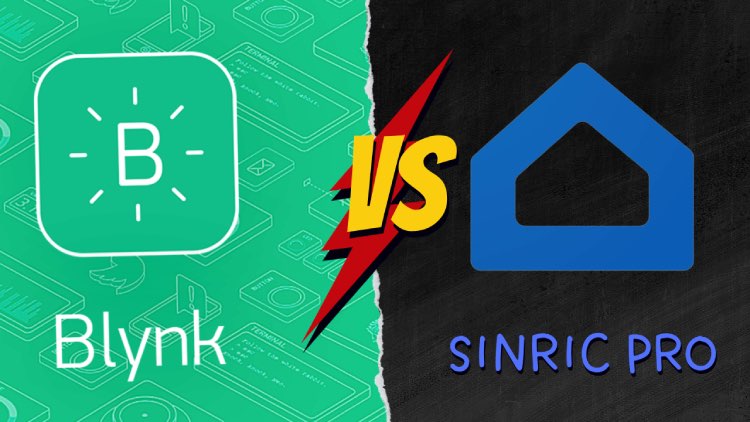
In the ever-evolving field of IoT (Internet of Things), platforms like Blynk and Sinric Pro have emerged as key players, Blynk and Sinric Pro are both powerful platforms in the realm of IoT Projects, but they serve distinct purposes and cater to different needs. Let's explore the key differences between Blynk and Sinric Pro, shedding light on their purposes, capabilities, and the experiences they bring to the world of connected devices. You can also check out our article on selecting the right platform for your IoT solution if you are interested.
1. Purpose and Focus
Blynk: Blynk is a versatile and dynamic IoT platform designed to empower developers and enthusiasts to create personalized mobile applications. Its primary goal is to facilitate the seamless interaction between users and their IoT devices by providing a user-friendly interface for building custom dashboards. Blynk stands out for its adaptability, supporting an extensive range of hardware platforms, including Arduino, Raspberry Pi, ESP8266, and ESP32.
Sinric Pro: Sinric Pro, on the other hand, is specifically tailored for integrating IoT devices integration with voice-controlled platforms. Sinric Pro focuses on enabling users to effortlessly connect their IoT devices with popular voice assistants like Amazon Alexa and Google Home. This specialization sets it apart, positioning Sinric Pro as a dedicated solution for those seeking a voice-centric IoT experience.
2. Integration and Hardware Compability
Blynk: Blynk supports a wide range of hardware platforms, making it compatible with various microcontrollers and development boards, or single-board computers such as Arduino, Raspberry Pi, ESP8266, and ESP32 blynk provides a platform-agnostic environment. This flexibility allows users to choose the hardware that best suits their project requirements.
Sinric Pro: Sinric Pro, while not as hardware-agnostic as Blynk, it’s primarily focuses on integration with Amazon Alexa and Google Home. It provides libraries and tools to easily connect IoT devices to these voice-controlled platforms. While it may support multiple hardware platforms, its main strength lies in voice-enabled interactions.
3. Voice Control
Blynk: Blynk, by default does not provide voice control features. While it offers a great platform for building mobile apps with intuitive interfaces, users interested in voice interactions need to explore additional integrations or solutions outside the Blynk ecosystem.
Sinric Pro: The standout feature of Sinric Pro is its seamless integration with voice assistants. It allows the integration of IoT devices with Amazon Alexa and Google Home, allowing users to command and monitor their devices using voice commands. This can be particularly advantageous for users who prefer a hands-free approach to IoT device management.
4. Use Interface and Ease of Use
Blynk: Blynk is known for its user-friendly drag-and-drop interface, making it easy for developers to create customized dashboards without extensive coding knowledge. The platform emphasizes simplicity and quick prototyping.
Sinric Pro: Sinric Pro, while not focusing extensively on custom dashboards it is designed to simplify the process of integrating IoT devices with voice assistants. Its libraries and examples aim to simplify the development process, especially for users looking to incorporate voice-controlled functionalities without delving into complex coding endeavors.
5. Community and Support
Blynk: Blynk boasts a large and active community of developers and makers. This vibrant community contributes to an extensive collection of tutorials, forums, and resources, making it easier for users to find solutions to common issues.
Sinric Pro: Sinric Pro has a growing community, and its support is geared towards assisting users in integrating their devices with Amazon Alexa and Google Home. While it may not be as extensive as Blynk's community, the platform benefits from regular updates and improvements based on user feedback within its targeted domain.
In summary, Blynk and Sinric Pro serve different purposes within the IoT field. Blynk is a versatile platform for creating mobile applications to control IoT devices, while Sinric Pro specializes in integrating devices with voice-controlled platforms like Amazon Alexa and Google Home. Whether you prioritize a diverse array of hardware compatibility and customizable dashboards go with Blynk or seamless integration with voice assistants then go with Sinric Pro, both platforms contribute significantly to the ever-expanding landscape of IoT possibilities. The choice between the two depends on the specific requirements and preferences of the developer or user.
We have already covered a project on ESP32 Home Automation with Google Assistant & Alexa using Sinric Pro, you can check that out if you want to get started with sinric pro.





